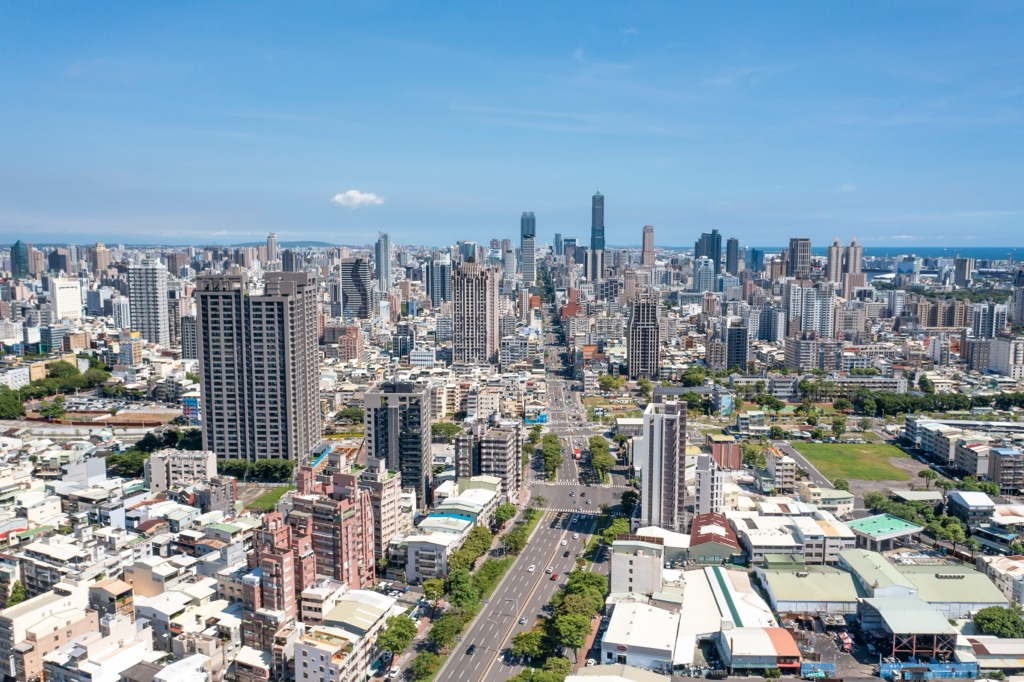Get PeakVisor App
Sign In
Search by GPS coordinates
- Latitude
- ° ' ''
- Longitude
- ° ' ''
- Units of Length

Yes
Cancel
Share ×

Scan the QR code and open PeakVisor on your phone
❤ Wishlist ×
Choose
Delete
Tucked in a valley amongst southern Taiwan’s verdant hills is the humid and fertile Jinshuiying Major Wildlife Habitat (浸水營野生動物重要棲息環境). Dahanshan (大漢山), measuring 1,692 meters (5,551 ft), is the tallest and most prominent of the 3 named hills in the primitive region.
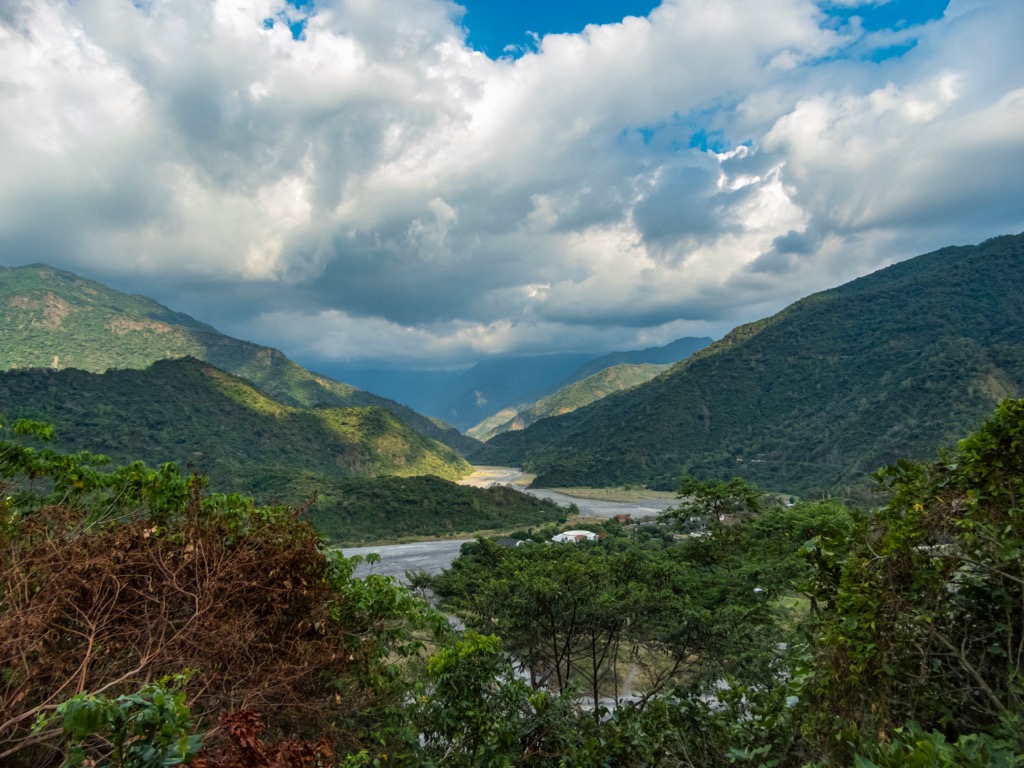
Jinshuiying Major Wildlife Habitat lies in the heart of southern Taiwan in Chunri Township (春日鄉) of Pingtung County (屏東縣). Situated south of Dawu Mountain Nature Reserve (大武山自然保留區), the flourishing broadleaf forest of cedar, ferns, and low-elevation subtropical flora spills across the environment into Jinshuiying Major Wildlife Habitat.
As the area lies in a basin, it’s bordered by four mountains: eastern Guzilunshan (姑子崙山), southwestern Dahanshan, Rimushan (日暮山) in the west, and Jingshuiying (浸水營) in the southeast. All these peaks except Jingshuiying fall in the boundary of the wildlife habitat.
While Jingshuiying Major Wildlife Habitat protects the natural fauna of birds, amphibians, and reptiles, the undulating 1,119-ha (2,765 ac) region is environmentally rich and biodiverse. Thus, there are 238 species of ferns and an assortment of regional plants and endangered flora.
The rampant broadleaf forest thrives in the typically warm and humid southern Taiwan climate. Along the elevation of 500 to 1,692 meters (1,641 to 5,551 ft), the annual average temperature is 63°F (17°C), climbing to 70°F (21°C) in summer and dropping to 55°F (13°C) during the winter. The humidity is heaviest in the summertime, especially during the months of May to September, which is the peak typhoon season. The yearly precipitation mean is 3,680 mm (145 in).
Come rain or shine, Jinshuiying Major Wildlife Habitat is a gem of southern Taiwan, with wild emerald woodlands and misty mountains. There are a few places of interest nearby should you want to explore another area.
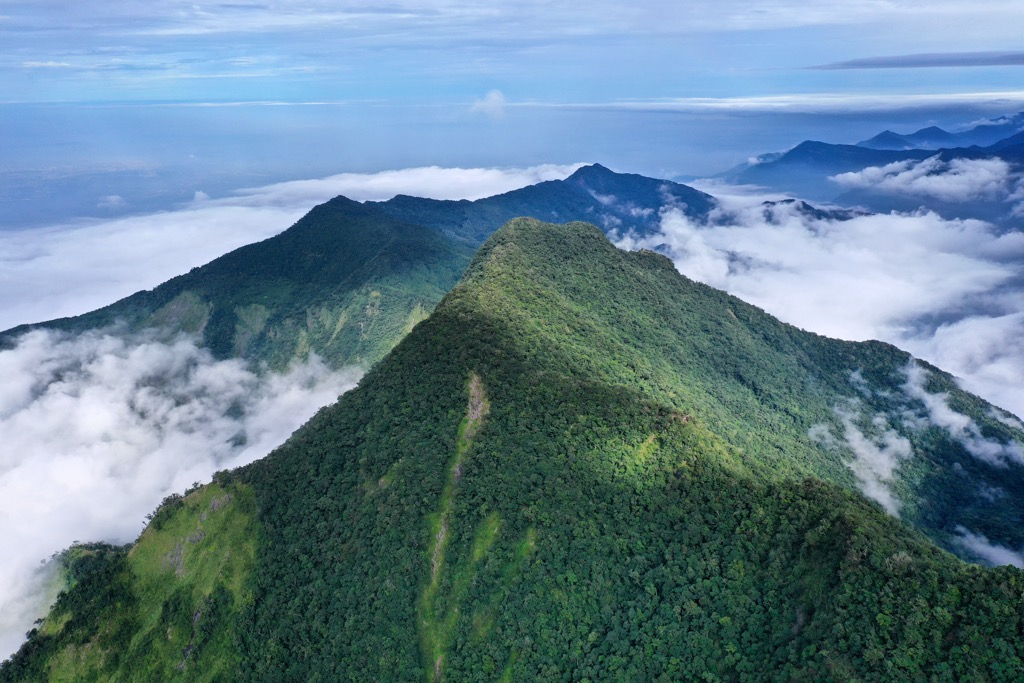
Dawu Mountain Major Wildlife Reserve lies due north, with Chachaya Lai Mountain Major Wildlife Reserve (茶茶牙賴山野生動物重要棲息環境) in the south. The coastal Xuhai-Guanyinbi Nature Reserve (旭海-觀音鼻自然保留區) is southeast, while Donggang (東港), the gateway to Xiaoliuqiu’s (小琉球) coral reef island, is in the west.
Jinshuiying Major Wildlife Habitat’s hills belong to the southern extension of the Central Mountain Range (中央山脈). Taiwan’s longest sierra, at 270 km (168 mi), runs from northern Yilan County (宜蘭縣) to southern Pingtung County, with gentler hills at either end and intensifying in height towards the island’s center. Dahanshan and the surrounding hills are composed of black shale and slate rock of the Miocene epoch, making them strong, sturdy, and steep.
Characterized by a fertile broadleaf forest, Jingshuiying Major Wildlife Habitat is an emerald world of luxuriant foliage. In the lower areas from 1,000 to 1,250 meters (3,281 to 4,101 ft), the evergreen laurel Litsea acutivena Hayata dominates the environment.
From 1,250 to 1,450 meters (4,101 to 4,575 ft), you’ll find the lush perennial plants of Taiwan mountain logan, honeysuckle, and narrow-leaved Lungwort. Lithocarpus dodonaeifolius, an endangered endemic plant, and Japanese Machilus also grow in the area. While above 1,450 meters (4,575 ft), a variety of ferns, orchids, and other ground cover plants thrive in the windward forest zone.
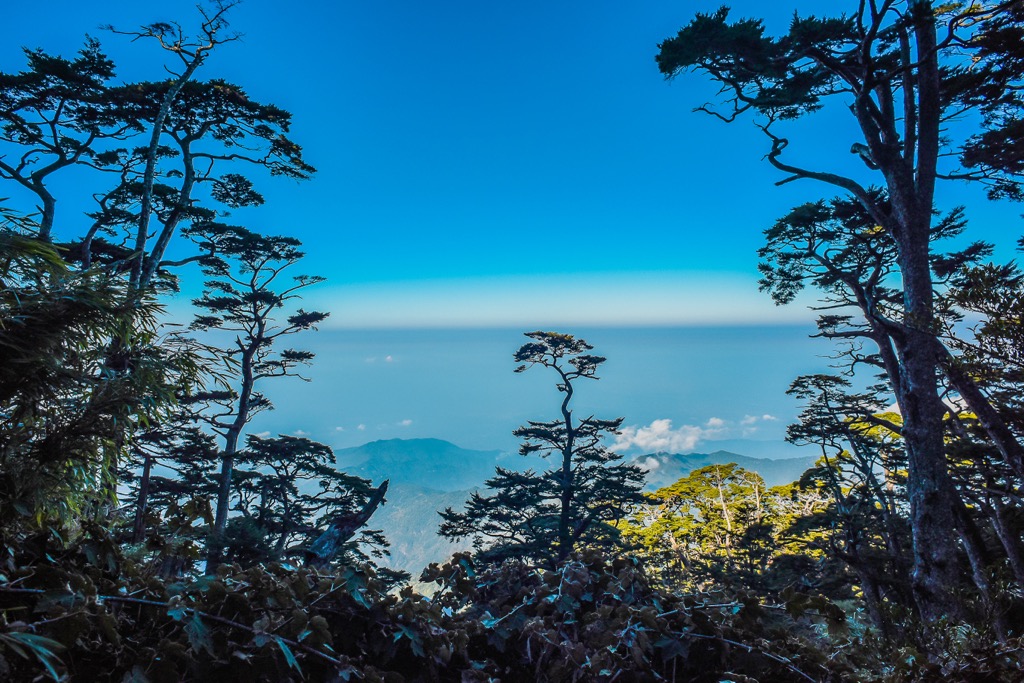
One of southern Taiwan’s longest ancient roads passes through the Jinshuiying Major Wildlife Habitat. Spanning 15 km (9 mi), Jingshuiying Ancient Road begins in Fangliao Township (枋寮鄉) in Pingtung County, crossing into Chunri Township and then continuing onto Daren Township (達仁鄉) of Taitung County (臺東縣) in eastern Taiwan. However, the Paiwan people would walk the much longer path to Kaohsiung City (高雄市) in the west, totalling a milage of 43 km (27 mi).
Established nearly 500 years ago, the path was used by the local Paiwan tribe as a trading route between western and eastern Taiwan. During the Japanese Occupation Era, this route became heavily guarded as a security road. As you walk along this route, you’ll notice abandoned police posts built by the Japanese. Many people still walk this road for leisure, as it's known as a verdant path of rampant greenery and a popular forest bathing trail.
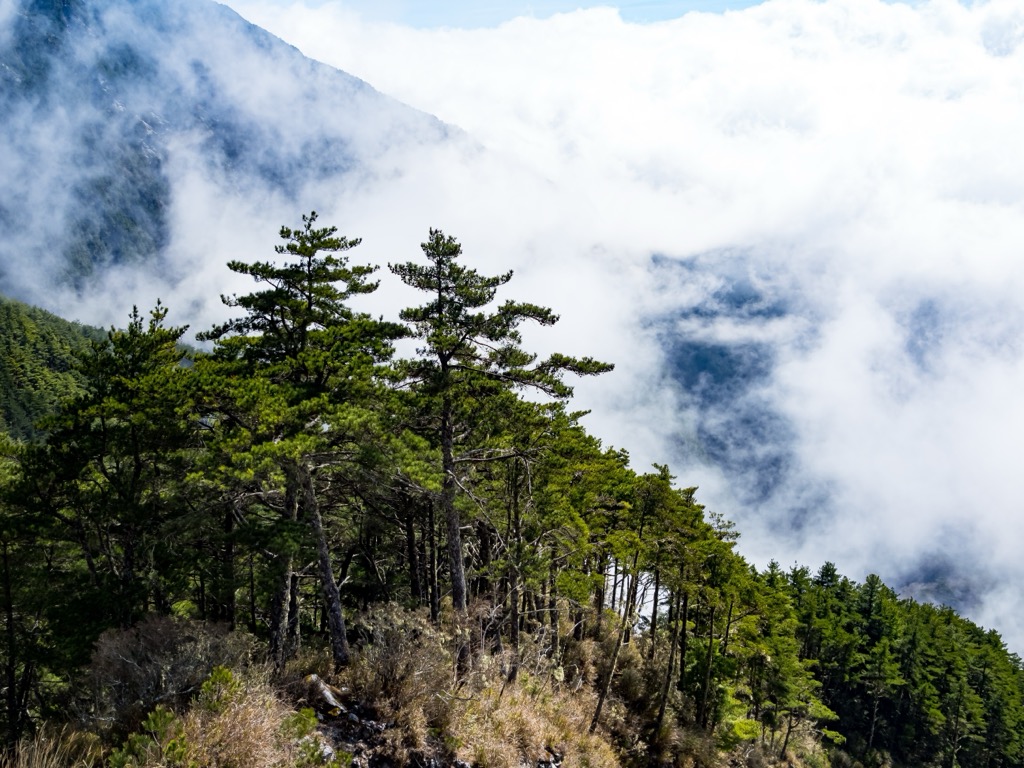
We recommend these major hiking trails and areas when visiting Jinshuiying Major Wildlife Habitat and its surrounding land:
A leafy path full of history and nature, trek the Jinshuiying Ancient Road on a dry, sunny day. Rain soaks the muddy, slippery ground, and you’ll need to bypass the flooded river adding an extra 4 km (2.4 mi) to the route. However, hikers love the primitive and undeveloped path as it feels worlds away from hectic urban life.
Along the route, you’ll enter thick forests bursting with vibrancy and phytoncide. The broadleaf foliage releases calming chemicals that still your mind and increase blood circulation. Bask in the wonderful experience of forest bathing as you inhale the aromatic wooded scent of the woodlands.
You’ll also notice relics from human life in the mountains. Not only will you stumble upon old Japanese guard stations, but you’ll also uncover charcoal kilns. The local Paiwan people would construct these circular ovens using earth and mud, burning wood down to charcoal to sell in the flatlands. However, once gas power gained popularity, people needed little use for charcoal to create fire and abandoned these mountainside ovens.
Other highlights of the trail are the sweeping outlooks of Pingtung’s rugged countryside. In the north, you’ll notice the peaks intensify in height, while the southern view is an undulating network of rolling hills. You’ll also cross suspension bridges in the fertile woods and hear the gushing stream below you. It’s a beautiful walk and one you’ll remember.
Tread the aromatic groves of Dawu Taiwan Keteleeria Nature Reserve (大武臺灣油杉自然保護區), where knotted 1,000-year-old cedar trees gained divine status. A protected area, the nature reserve preserves Taiwan Oil Fir, also Taiwan Keteleeria (Keteleeria davidiana var. Formosana Hayata), part of the cedar family.
Known for its hilly landscape, climb the verdant terrain as you admire the flourishing region of leafy foliage. Another ideal spot for regenerative forest bathing, delight in the fragrant cedar and fir groves shaded by a dense forest canopy, rustling in the soft wind. The environment is undisturbed and pristine, with little human disturbance in the luscious woodlands, so you’ll hardly encounter any other visitors on your journey.
Situated outside of the Jinshuiying Major Wildlife Habitat is the Shikejian Shan Hiking Trail on the junction between Chunri Township and Laiyi Township (來義鄉) of Pingtung County. One of the highlights of this trail is the traditional Paiwan homes in the Tjuvecekadan (老七佳石板屋) community scattered deep in the mountains. A cluster of around 50 old residences, still occupied by local Paiwan people.
Those who love a challenging climb will be drawn to hiking Shikejian Shan (石可見山). Narrow ridgelines and virgin rhododendron forests add a layer of difficulty to the path, but you won’t mind your muscles aching when you rest and take in the delightful views. Another one of the route’s highlights is crossing the Old Qijia Suspension Bridge, where you’ll embrace the emerald environment of foliage in the undulating landscape.
Although Shikejian Shan’s summit is overgrown, there are countless clearings along the way where you’ll admire the meandering Lili River from the sheer ridgelines and the verdant landscapes of the rugged countryside.
Another one of southern Taiwan’s remote and rampant regions perfect for hiking is the Chachaya Lai Mountain Major Wildlife Habitat. Like Jinshuiying, the vegetation is abundant and thriving, attracting wildlife to inhabit the forests. It’s always a fascinating prospect to encounter both stirring nature as well as animals in their natural habitat when hiking.
One of the best trails in Chachaya Lai Mountain Major Wildlife Habitat is the Cha Cha Ya Dun Shan Hiking Trail. It’s a steep trek from 600 meters (1,969 ft), but the outlooks onto neatly lined watermelon farms and the snaking Fanshan River are wonderfully worthwhile. You’ll then enter a dense acacia grove before reaching the summit.
Listen out for the echoing shrill of birding in the woodlands, where you may find the blue-bellied pheasant, and you might even spot Taiwan macaques swinging from the trees. From Cha Cha Ya Dun Shan’s (茶茶牙頓山) mountaintop, gaze over the gentle hilly land tapering towards the south coast.
Just north of Jinshuiying is another fertile area where animals live. Dawu Mountain Major Wildlife Habitat is a flourishing region of old-growth forests and mountain lakes and also holds the southernmost peak of the tallest 100 mountains in Taiwan. Beidawushan (北大武山) measures 3,092 meters (10,144 ft) and is a staggering hill with cloud cover near its peak that is highly revered amongst the Paiwan people.
One trail you simply have to climb is Beidawushan Hiking Trail for its challenging route, historical prominence, sweeping views, and thriving plant communities. It’s a 9 km (5.6 mi) trek up the hill, so it's best completed over two days. Due to the rugged and sheer terrain, metal rods are fixed along the cliffs to help you ascend the peak.
You’ll first encounter a subtropical monsoon rainforest upon climbing, consisting of various banyan trees interlocking their aerial roots in a cobweb of branches. As you gain elevation, the cypress and yew conifers replace the broadleaf foliage. In this forest zone, you’ll find a 1,000-year-old giant Taiwan red cypress tree measuring 25 meters (82 ft) with a width of 11.7 meters (38 ft). Then you’ll progress towards the largest hemlock forest in Taiwan as you continue your climb.
Before you reach the summit, you’ll see the Takasago Volunteer Army monument, which commemorates the fallen Paiwan soldiers who were forced to fight for the Japanese army in the Second World War. As the Paiwan respect the giant hill, it's an honor to be remembered here. Further ahead lies the Dawu Temple and Otake Shrine, built by the Japanese to memorialize those who lost their lives fighting in Pearl Harbour.
Another 1 km (0.6 mi) after the monuments, you’ll reach the summit of Beidawushan. The views are unrivaled, as you’ll see as far as the southern tip of the Hengchun Peninsula and Yushan’s (玉山) colossal pinnacle in the north.
Consider staying in Pingtung City (屏東市) or Kaohsiung City when visiting the inland and remote region of Jinshuiying Major Wildlife Habitat. Both cities are popular bases for travelers, each destination offering a different experience according to your tastes.
If you want a mix of city life and a relaxing break, then head to Pingtung City. Known for its cultural heritage and proximity to some of Taiwan’s finest natural attractions, like Kenting National Park (墾丁國家公園), you can immerse yourself with culture and vibrant greenery.
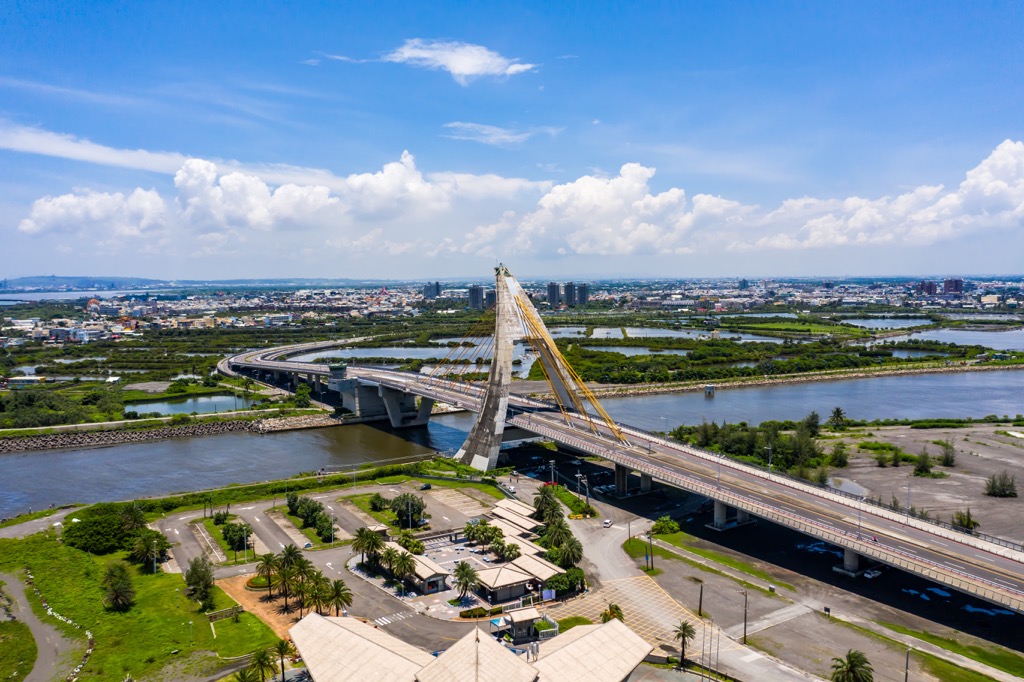
One place the locals love is luscious and leafy Pingtung Park (屏東公園). No matter what time of day you visit, the stunning space of towering palm trees, serene lakes and historical landmarks. The old Ahou City Gate from 1836 still stands in the park, the only remnant of the wall that once enveloped the city. Particularly striking at night, light installations illuminate the woodlands and mirrors against the lake waters. During Chinese New Year, Christmas, and other celebrations, the local government puts on a fascinating display of lights that attracts nightly visitors.
Another place worth visiting in the evening is Pingtung Night Market (屏東觀光夜市). It’s the ideal place to start your culinary journey in southern Taiwan. Try the chewy and steamed Pingtung meatballs, seasoned chicken rice with peanut powder, or a hearty combination of noodles with radish and sesame sauce. No matter what you eat, drink or rest your eyes on, you’ll be amazed at the overload of color, aromas, and vocal vendors making a sale.
After fueling up on delicious foods, add the Liudui Hakka Cultural Park (六堆客家文化園區) to your itinerary the following day. Explore exhibitions that center around the lifestyle of the Hakka people in the Pingtung region, take part in Hakka language classes, and watch cultural performances of Hakka dance and songs. The park spans 30 hectares (74 acres) of land and boasts an array of natural attractions, including a flower garden, a lake, expansive grasslands, and beautifully landscaped grounds.
Taiwan’s capital of the south is also the island’s largest port city and second largest metropolis, so you’ll never run out of things to do. From its buzzing shopping district to its luscious green parks and eclectic art scene, Kaohsiung has an undeniably quirky vibe.
A non-negotiable when visiting Kaohsiung City, you don’t want to miss the Lotus Pond’s (蓮池潭) opulent charm. Three towering pavilions perch above the lotus-filled lake, each more animated, colorful, and vibrant than the next. The Tiger and Dragon Pagoda is the closest pavilion to the lake entrance and the most visited. Enter through the Dragon’s mouth for good luck, which leads you to the seven-storey towers. From here, you can see nearby Shoushan (壽山) from the highest floor, which is the perfect spot to view the sunset.
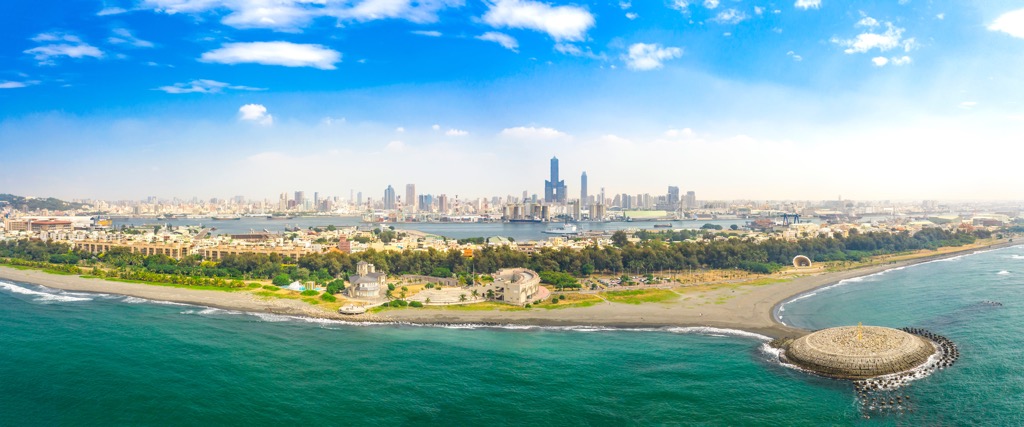
Nearby to Lotus Pond is Shoushan National Nature Park (壽山國家自然公園), brimming with history, stunning views and beautiful nature trails. Hike to the underground hillside bunker built during the Japanese Occupation Era on Chaishan Boy Hill (柴山少男峰), used as a military lookout onto the Taiwan Strait. Then venture towards Taigou Valley (泰國谷), through dense and sheltered banyan woodlands. Admire the terracotta hair-like strands of Jinping vine aerial roots that descend into the 3 meter (10 ft) limestone ravine. As you continue the trail, you’ll gaze onto the glorious Taiwan Strait and see unrivaled views of Kaohsiung with the notable 85 Sky Tower decorating the skyline.
Finally, for a whole different perspective, visit Kaohsiung’s tallest skyscraper, the 85 Sky Tower. The 85-storey structure measures 347.5 meters (1,140 ft), and used to be Taiwan’s tallest building before Taipei101’s completion. Designed to resemble the Chinese character gao (高), the first character of Kaohsiung City’s name, it displays a pronged shape of two lower towers with one tower rising centrally above them. From the observation deck on the 74th floor, you can view Lotus Pond, Shoushan National Nature Park, Kaohsiung Port, and the grid-like layout of southern Taiwan’s buzzing city.
Take the Taiwan local express train (TRA) from any of Taiwan’s major cities to Pingtung City. From here, it is best to hire a car or scooter or take a taxi for the 62 km (39 mi) journey to Jinshuiying Major Wildlife Reserve due to limited public transport options.
Explore Jinshuiying Major Wildlife Habitat with the PeakVisor 3D Map and identify its summits.

